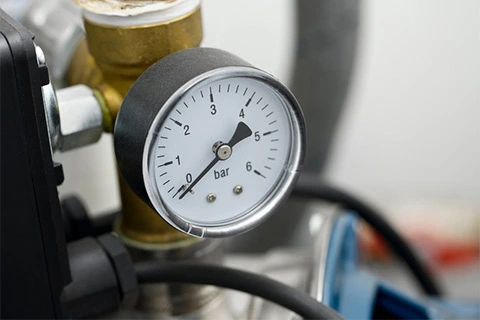Compressor Standards

Compressor standards primarily focus on the design, performance, and quality requirements for compressors. These standards also provide recommended test procedures and guides for the application and use of compressors. SAE International (SAE) has developed several compressor standards that are applicable to air conditioning, gas, and brake compressors that are used in aerospace applications and commercial vehicles. Several SAE Technical Committees, including the Truck and Bus Brake Supply and Control Components Committee (fact sheet) and the E-25 General Standards for Aerospace and Propulsion Systems Committee (fact sheet), contributed to the development of these standards.
SAE J 1340-2011 (SAE J1340-2011)
Test Method for Measuring Power Consumption of Air Conditioning and Brake Compressors for Trucks and Buses ( Reaffirmed: Sep 2011 )
The testing techniques outlined in this SAE Recommended Practice were developed as part of an overall program for testing and evaluating fuel consumption of heavy-duty trucks and buses. The technique outlined in this document provides a general description of the type of equipment and facility which is necessary to determine the power consumption of these engine-driven components. It is recommended that the specific operating conditions suggested throughout the test be carefully reviewed on the basis of actual data obtained on the specific vehicle operation. If specific vehicle application is not known, see SAE J 1343. The purpose of this document is to provide a recommended test procedure for establishing the power consumption of an air brake compressor or an air conditioning compressor. It is intended that this test procedure be used to determine compressor power consumption over a range of operating conditions, including both the loaded and unloaded modes. The resulting data is intended for use in the measure of probable vehicle fuel consumption under operating conditions.
SAE J 2743-2012 (SAE J2743-2012)
Air Compressor Size Rating Recommended Practice ~ Truck and Bus ( Reaffirmed: Jul 2012 )
This SAE Recommended Practice is intended to describe a procedure for rating the size of single-stage reciprocating air compressors. It describes the conditions that can be used for testing and it defines a standardized rating expressed in SLPM (SCFM).
SAE MS 1003-2018
Lubricants, Industrial Oils, and Related Products Type D Compressor Oils - Specification
See Table 1. DAx fluids are mineral oil based, DPx fluids are polyalphaolefin based, and DEx are ester based.
SAE AIR 4994A-2013 (SAE AIR4994A-2013)
High Pressure Pneumatic Compressors Users Guide For Aerospace Applications (Stabilized: Nov 2013)
Gas compressors (air and other compressible fluids) have been used sporadically since the 1940's for various utility functions in aerospace applications. They have been used to provide power to gun purge and drive systems, engine or APU starters (recharge accumulators), reservoir pressurization, cockpit pressurization, braking systems, canopy seals, engine control divides, landing gear activation, and boosted flight controls (see Table 1). In current state-of-the-art aircraft, most pneumatic system power is extracted from a stage of compression in the turbo-jet engine. As more and more demands are put on new generation engines for fuel economy and performance there is an increasing need for a new source of pneumatic power. This document is intended to describe current state-of-the-art technology in compressors, define the limitations, discuss enhancements needed and attempt to predict the needs of the future.
SAE ARP 510B-2019
Moment Weight of Turbine and Compressor Rotor Blades
To standardize Turbine and Compressor rotor blade drawing data and blade marking requirements for the purpose of classifying blades with respect to their moment weight.





